
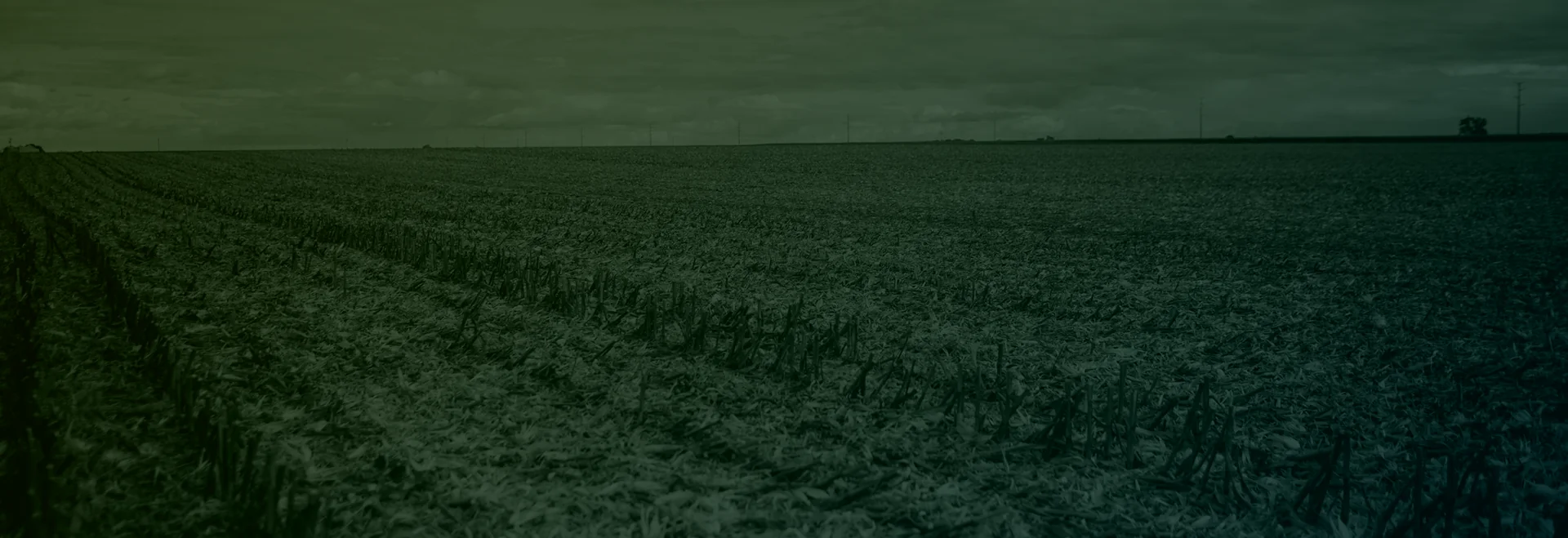
When you sit down with the links in the crop season value chain to learn what worked and what didn’t, you can’t help but gain insight into management opportunities for the next growing season. That’s the goal of every Taranis retailer-farmer relationship and exactly what was highlighted in a recent CropLife hosted webinar.
Trevor Cox, Advanced Cropping Systems Manager for Central Valley Ag, Tyler Tobald, a Kansas farmer and CVA customer and Tim Pearson, Taranis Regional Manager, discussed the 2023 season and how Taranis AcreForward Crop Intelligence delivered the data CVA needed to make the recommendations that put Tobald in the driver’s seat to make decisions for his acres.
“I found real value with what I was seeing,” says Tobald. “Being able to make educated decisions based on what I was seeing, not what I was hearing secondhand via someone’s opinion. I actually saw the data and made my own decisions – data doesn’t lie.”
The process for enrolling acres in AcreForward Crop Intelligence is as easy as clicking a button.
“Our secret sauce is the AI-driven software model that builds from your planting date. All we need is your field boundaries and your planting date/dates,” Pearson explains. “Once we’ve got that information, the program builds a model and the flight cadence is varied to pick up emergence information, weed species, nutrient deficiencies and disease and insect presence.”
The goal is creating opportunities for farmers and their advisory team to be proactive with their in-season stress mitigation plans while building a play book… through a series of ultra-accurate, leaf-level game tapes for every “season” of the growing season. The digital imagery combined with the dashboard equips CVA’s crop scouting team with the information they need to quickly prioritize, ground truth and formulate an action plan for every acre of every enrolled field.
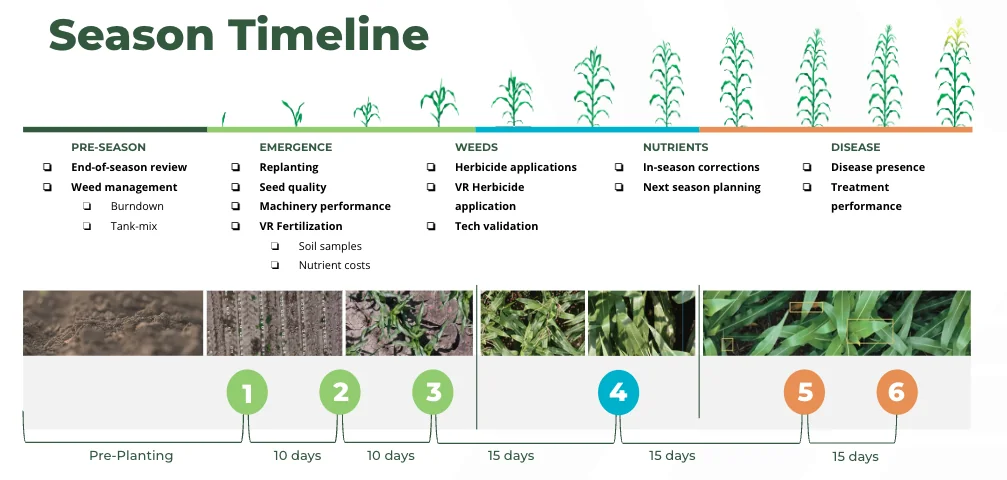
“The software is looking for anything that’s not a healthy crop, and that information is processed in less than 24 hours,” says Pearson. He adds that as a former agronomist, AcreForward Intelligence takes the emotion and the human error out of scouting. “I know that when I was scouting, if I was there to pull tissue samples, that is what was on my mind. I may have walked by something else unintentionally. AI doesn’t miss anything.”
What is delivered with every flight is a review of what’s working, what’s not and which areas need boots-on-the-ground attention.
With hundreds of thousands of acres for the CVA scouting team to cover each season, the opportunity to prioritize acres is paramount to the success of the cooperative and the farmers they serve.
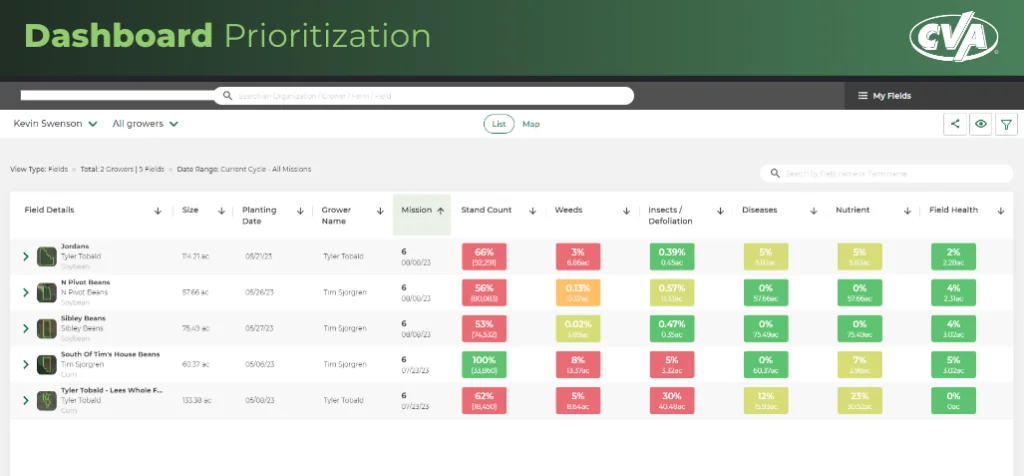
“When you pull up your dashboard in the morning, this is what you’re going to see. It’s a breakdown of all of the fields and farms you’re managing. It shows each flight,” Cox says. “As an advisor, looking at the dashboard is how I start my morning. I look at everyone’s fields so I can prioritize who I am calling first or where I’m driving to.”
Cox and Pearson agree that the time and manpower needed to gather a fraction of the information AcreForward Crop Intelligence delivers after just one flight isn’t a possibility. The tool positions retailers and the farmers they work with to spend their time finding solutions and creating future plans to mitigate yield and financial losses.
Cox says that the first flight helped to determine replant for a lot of the farmers he and his team works with.
“You basically have a week, from the time that first corn plant comes out of the ground to when the last one does—you want as many plants emerged as you can get in that timeframe to maximize your yield potential. So, when I see Tyler’s “Lee Farm” field coming in at 56% early-on, we know that we have some investigating to do,” he says. “Our growers got a huge amount of value from Taranis Crop Intelligence this past planting season because the tool helped them find planter issues. Most of the issue led back to down pressure issues where the seeds weren’t reaching moisture,” Cox says, noting that 2023 was one of the driest seasons the area had seen in the past decade.
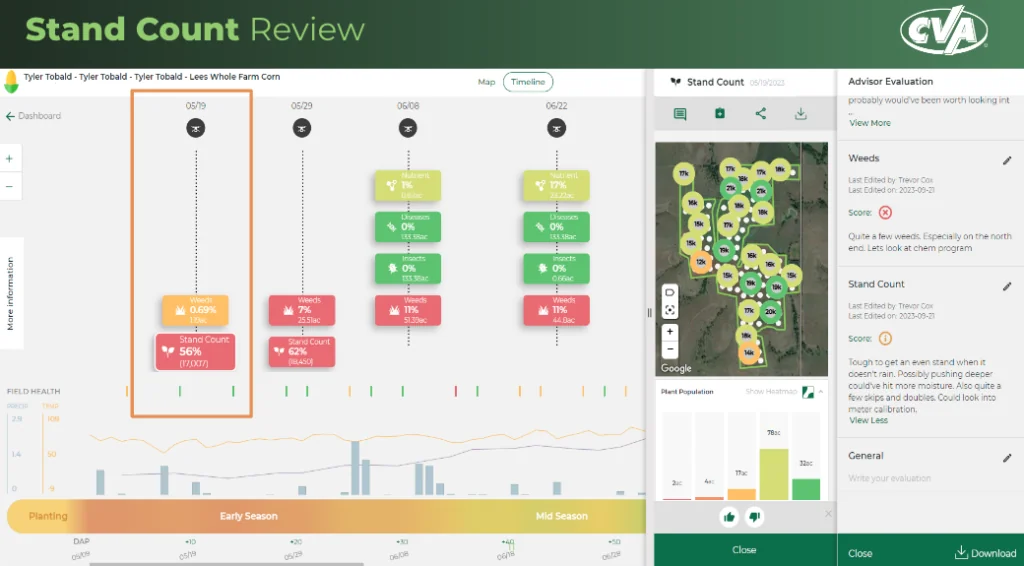
Tobald shares that he had separated a field with half maintaining residue and half with no residue.
“The whole field is 133 acres. I ended up spraying 90 acres of that and at $45 an acre, not having to spray 43 acres is money back in my pocket,” he says.
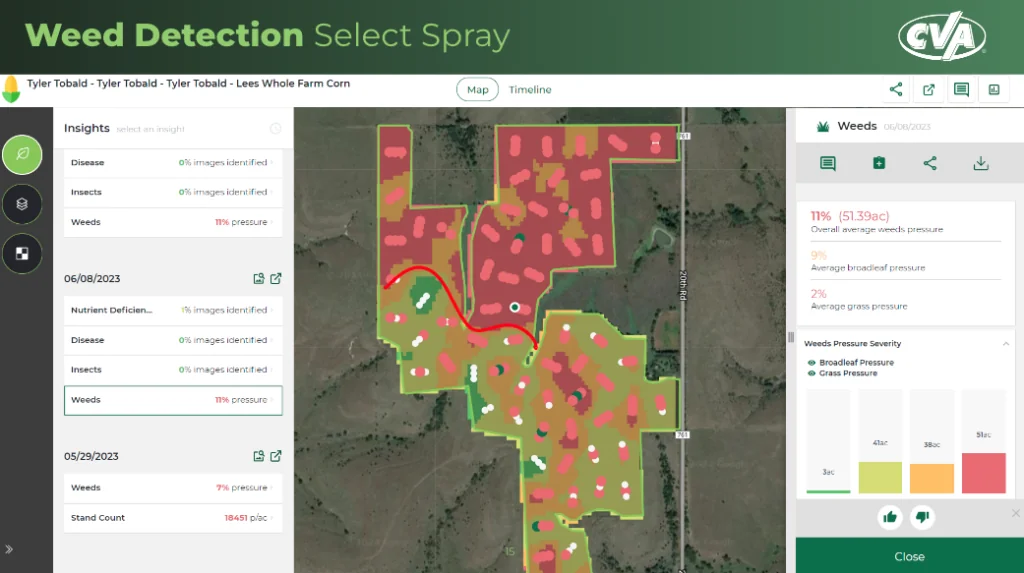
“This picture of this tiny weed isn’t cherry-picked. This was actually pretty normal for me to see in the images and one of the things that really shocked me,” says Tobald. “Pigweeds are resistant to everything, so catching them truly makes a difference in how we are able to manage.”
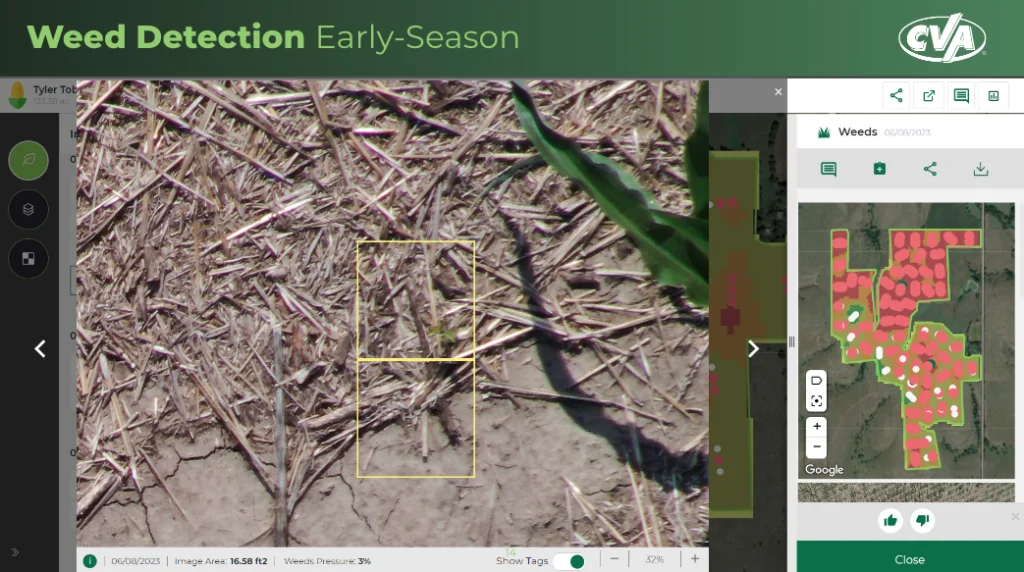
“I didn’t have a lot of insect issues,” Tobals says. “This was just one flight and I got one Japanese beetle notification. This was three leaves down – that far down in the canopy the software spotted and identified a Japanese beetle.”
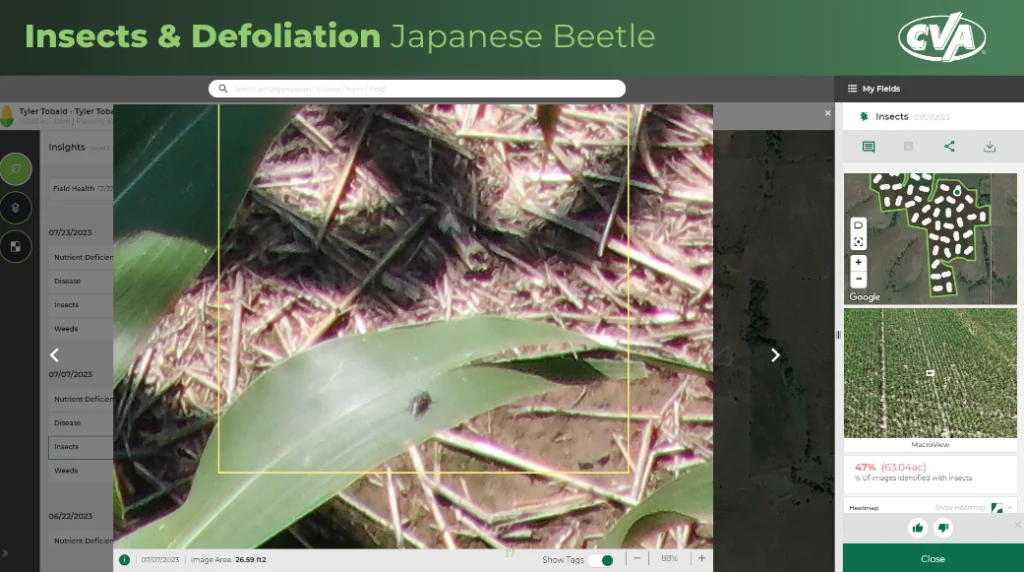
“This was an interesting year for nutrient deficiencies because it was so dry,” Cox says. “AcreForward Crop Intelligence was a great conversation starter. Plants physically couldn’t take up what they needed because of the drought and those deficiencies would show on the flights and then we got a rain and saw those deficiencies removed from that next flight. It was great validation for how well the software works.”
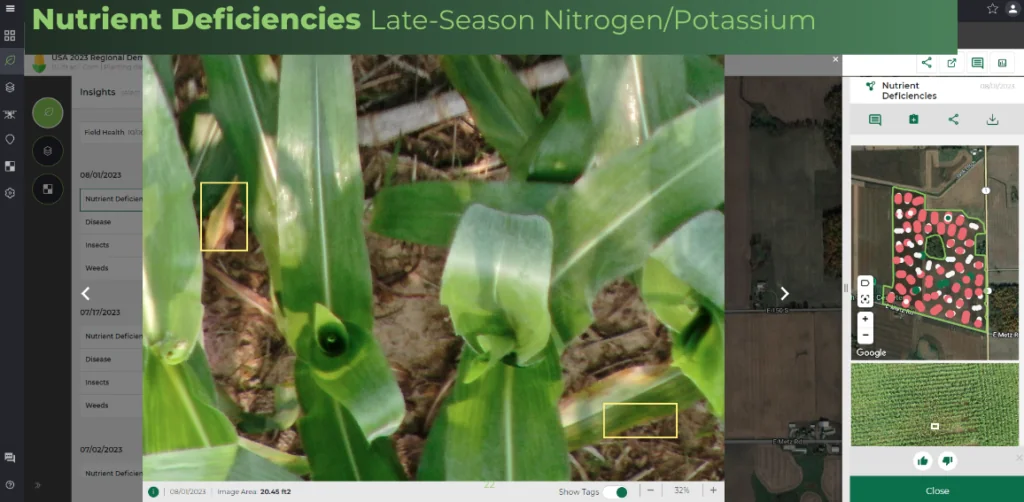
“Just looking at this stand count, we can start to ask questions about what’s going on. This stand ended up coming in at 95,000,” Cox says reviewing his own soybean acres. “AcreForward Crop Intelligence allows you to create a shape file, upload it and select exactly what you want to do out there. There were spots that were 70,000 and some that were 95,000, and I know now that I should have replanted a lot of those 70,000 but the weather was so dry, it was a decision I could weigh the pros and cons of because I had the data to make the call.”
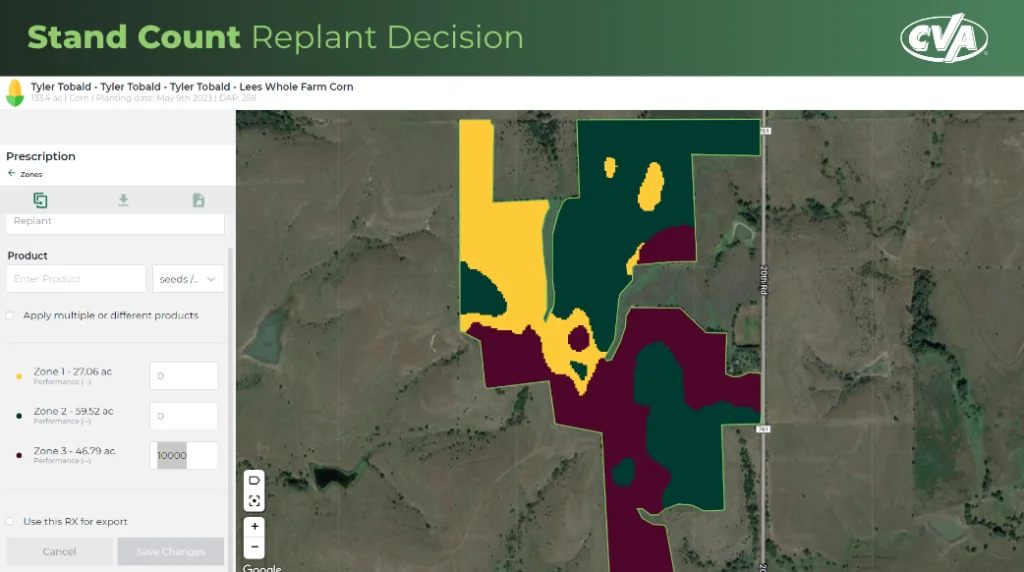
A key takeaway and underlying message of the webinar highlighted a versatile value proposition.
“I have a lot of guys who say, “It didn’t catch anything, my ROI was terrible,” Cox says. “But that’s not true at all. There’s so much value in knowing what you’re doing right. What’s working, where you don’t need to spend money, as Tyler pointed out. There’s value, tremendous value, in the comfort of knowing what is going on in your field and no other system provides that peace of mind like Taranis does.”
To learn more about Taranis, visit www.taranis.com.

With 30 years of experience helping growers find the solutions that work for them, Wilbur-Ellis Sales Agronomist, Paul Skiles, has seen his share of challenging growing seasons and done his part to put technologies and opportunities in the hands of growers when they need them most.
“I’ve been with Wilbur-Ellis for a little over three years now, and what drew me to the position was the amount of high-level service we provide across field-level activities,” Skiles shares. “That’s what excites me; I just want to be in the field with the grower, working to help make better decisions that increase yield and profitability.”

With more than 7,000 growers in five states, Landus Cooperative is leveraging the insights Taranis’ AcreForward Intelligence delivers to provide proactive solutions on a growing number of acres.
In the early summer of 2021, Landus signed up the first 200 acres that would benefit from Taranis AcreForward insights. By the end of the growing season, the stand count, disease and insect identification, and other insights had made that customer a Taranis believer. Landus launched #Grow23 with more than 50,000 acres enrolled with Taranis.
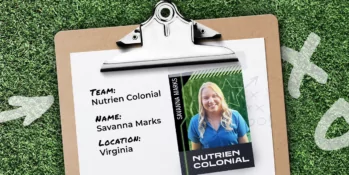
Experience. It’s a word you’ll hear Nutrien Sales Manager Brian Essinger use frequently. As a training pillar, Essinger says he cannot stress enough the importance of experience.